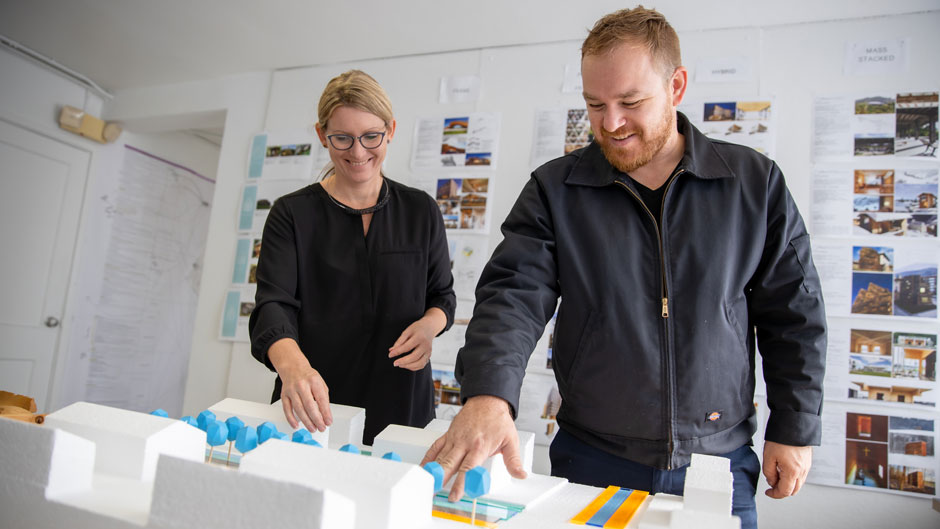When you think of the ideal material to use in building a sturdy and resilient house, apartment, or office building, what comes to mind?
Steel, concrete.
Think again.
Wood is fast becoming a favorite among architects and builders as a construction material. It is one of the oldest on Earth and yet one of the most resilient, renewable, and environmentally friendly.
“Wood is an ideal building material because it is a carbon sink—meaning it stores carbon instead of releasing it into the environment,” said Christopher Meyer, assistant professor at the University of Miami School of Architecture.
“The question of whether buildings are producing carbon is an important topic,’’ he said. “The less carbon our buildings release into the atmosphere, the better for the environment because the release of carbon contributes to the warming of the Earth’s atmosphere.”
Meyer and his professional and personal partner, Shawna M. Meyer, a lecturer at the school, saw Miami as ground zero for the effects of climate change and the ideal place to establish the Littoral Urbanism Lab (LU Lab). In that space studies are conducted about coastal environments and students, architects, and others are educated on the benefits of understanding building structures through their material resource, such as wood.
On Tuesday, Feb. 4, the LU Lab, in partnership with the Woodworks Wood Products Council, will host a workshop “Miami Resilience: Strategizing on Timber’s Role in Sustainable Urbanism,” to bring students, architects, engineers, and other members of the community together to learn about the benefits of using wood. The event will be held at the Perez Art Museum in downtown Miami.
On the same day at 6 p.m., there will be another School of Architecture event where there will be networking between key stakeholders with a social hour and a short presentation. Visit https://www.eventbrite.com/e/miami-resilience-strategizing-on-timbers-role-in-sustainable-urbanism-tickets-86975647503 for additional information on the events.
These events are the first of many for the LU Lab, which was funded with a $250,000 Wood Innovation Grant from the U.S. Forest Department. Although many in South Florida do not realize it, said Shawna Meyer, about 40 percent of the state of Florida is forestland.
“Northern Florida is part of the wood basket of North America,” she said. “This is a great resource for the building industry. There is a lot of potential for its use.”
Both educators hope the LU Lab will become the epicenter of wood education in South Florida, bringing together academics, students, architects, builders, and others in the construction industry.
Students enrolling in their studio courses are learning about the versatility of wood, called a “healthy product,” since it does not have to be treated or coated with paint to line interiors, said Christopher Meyer. He cited a movement in the construction industry where cross-laminated timber, or CLT, is used to expose wood in the interior of rooms. This eliminates the use of paint and other chemicals that are not environmentally friendly, he said.
Wood is also becoming more malleable as new technologies such as the use of computer numerically controlled milling processes have the capacity for precise cuts, eliminating waste.
Although storm surges and flooding may soak wood structures, all the material needs is to be dried out, said Christopher Meyer. A recent study of the Louisiana Delta, which exhibits some of the same flooding conditions as Florida, shows that some of their structures were created with wood, particularly columns and pilings. If damaged, these can be replaced much easier than steel or concrete, he said.
“We are not saying that the entire structure has to be made of wood,” said Christopher Meyer. “But hybrid systems with steel or concrete columns as the ground floors can be used and the second and subsequent floors could be made of wood construction assemblies.”
Rodolphe el-Khoury, dean of the School of Architecture, said the LU Lab exemplifies the school’s focus on urban resilience and shows its commitment to real-world problem solving, as well as making it a driver of research and learning.

